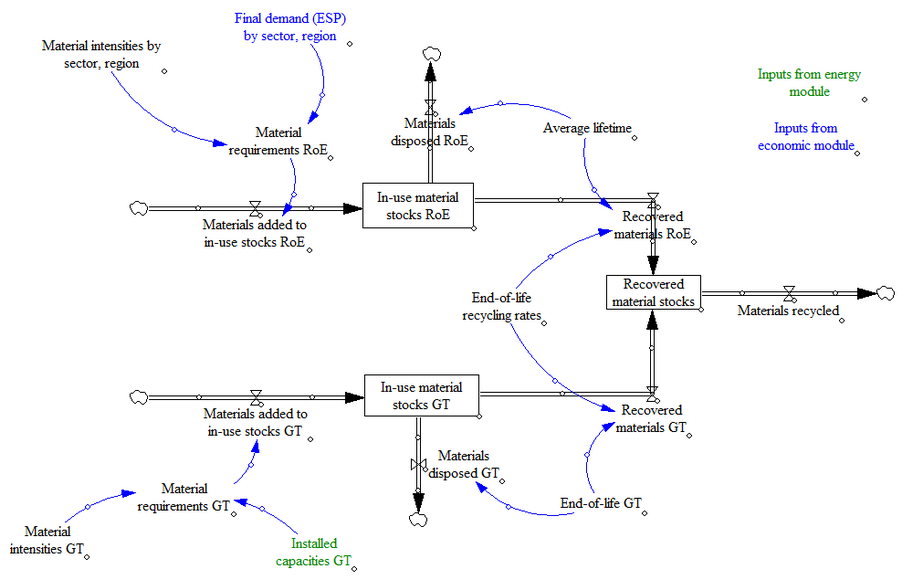Modelling dynamic material stocks and flows for Spain with the MODESLOW Integrated Assessment Model
Authors: Emmanuel Aramendia1, Rosa Lago Aurrekoetxea2, Jaime Nieto3, Oscar Carpintero3, Iñigo Capellán-Pérez3, Luis Fernando Lobejón3 , Carlos de Castro3.
1University of Leeds, UK; 2UPV/EHU;; 3University of Valladolid
The energy transition is likely to significantly increase the mineral requirements of our economies as renewable energy systems are considerably more material intensive than fossil fuel energy systems. In addition, needed energy storage technologies such as batteries will also require significant amounts of materials for their upscaling. Hence, we believe that it is crucial to consistently model material stocks and flows, so that the raw material requirements as well as the recycling potential can be understood in-depth.

Will the Spanish economy be able to achieve the energy transition to a low carbon economy? Specifically, what are the material requirements to make this transition?
The analysis has been performed by building the materials module of the MODESLOW Integrated Assessment Model for Spain, based on the integration of system dynamics and input output. We account both for material consumption for energy transition and the rest of the economy, and we discuss important modelling principles when dealing with material stocks and flows. Preliminary results suggest that strong measures need to be implemented if the Spanish raw mineral footprint is to stay within its weighted share of global mineral resources (calculated according to world and Spanish populations). See a basic stock-flow diagram of the materials module in the figure.
Details about the complete model can be found in https://geeds.es/modeslow/
This research has been presented at the ESEE 2022 Conference Pisa: https://esee2022pisa.ec.unipi.it/

